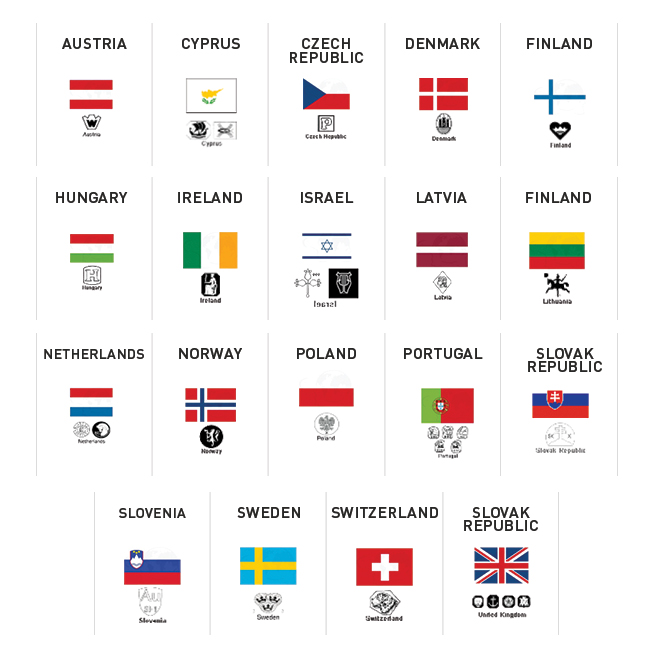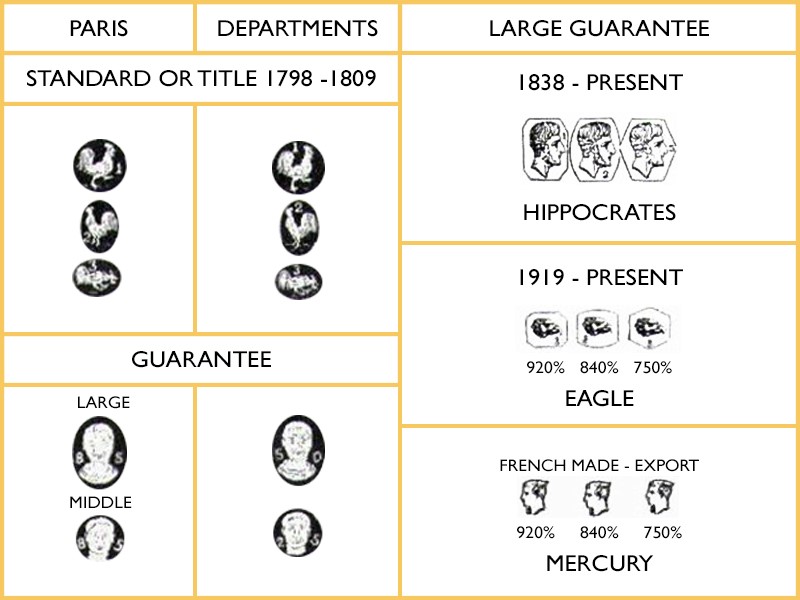Published: 21 May 2018
Understanding the gold hallmarking standards in European countries

Did you know that Hallmarking gold jewellery was Europe's earliest form of consumer protection, dating back to King Louis IX of France and Edward I of England in the 1200s ? Gold hallmarking has since then been a pre-requisite for all gold items meant for public sale.
Here’s a look at the current rules of gold hallmarking in Europe:
Most European nations are party to the Vienna Convention on the Control of the Fineness and the Hallmarking of Precious Metal Objects system. The convention is a treaty among states that are represented by their ministries responsible for precious metals. The convention introduced the Common Control Mark (CCM).
The marking of articles of precious metals with the CCM is voluntary. Manufacturers are not obliged to do so. The CCM marking is applied independently from the hallmarking system in place in each country.
There are currently 19 countries as members. Each member has one or more Assay Offices authorised to apply the Convention’s provisions (the CCM).

Other countries that follow the work of the convention are China, Croatia, France, Italy, Macedonia, Romania, Serbia, Singapore, and Spain.
- The CCM is accompanied by a country’s national Assay Office Mark, the responsibility mark (i.e. the manufacturer or sponsor) and the fineness mark indicating its purity.
- The responsibility marks must be registered in the country which applies the CCM. They do not need to be registered in the importing country.
- The numerical fineness mark is in parts per thousands
333 ~ 8K (33.3% gold) 583 & 585 ~ 14K (58.3—58.5% gold) 916 ~ 22K (91.6% gold) 375 ~ 9K (37.5% gold) 750 ~ 18K (75% gold) 960 ~ 23K (96% gold) 410 & 417 ~ 10K (41—41.7% gold) 800 ~ 19.2K (80% gold) 990 & 999 ~ 24K (99—99.9% gold) - The CCM has the same legal status as a national hallmark. It is applied by the designated national assay offices after checking the fineness as per the agreed testing methods. So, articles bearing the CCM are acceptable across the member countries

Hallmarking in France:
France is credited for having the most complex system of hallmarks known to the world.
- French marks are based on symbolism using abstracted forms of animals, people, insects and birds. All these symbols together indicate the fineness (purity) of the metal, place of manufacturing and the associated imports and exports.
- An eagle's head indicates a gold purity of at least 18-karat. The Law requires all gold jewellery to have a minimum purity of 18-karat, items that are intended for export may be marked with the pictorial marks for 9 and 14-karat.
- The mark of the maker needs to be in a lozenge shield with the initials of the maker incorporated in it

Hallmarking in Spain:
Spain follows a dual system of Assay Office hallmarking and licensed manufacturers marking. Hallmarking is a compulsory state requirement. Characteristics of the typical mark formation are:
- Mark of guarantee: It accredits gold’s alloy and can only be put by the Official or Authorised Laboratories of the Autonomous Communities accrediting the official law of the precious metal.
- First law: 750 fineness (parts per thousand)
- Second law: 585 fineness (parts per thousand)
- Mark of identification of origin: It accredits to the manufacturer or importer. This mark must be registered with the Spanish Office of Patents and Marks.
- Sponsor mark details: This identifies the person or company manufacturing or importing gold for sale in the country
- Fineness: Hallmarking is required for gold articles above 1 g. It is defined in parts per thousand (ppt). Acceptable fineness standards are 375 ppt, 585 ppt, and 750 ppt
- Assay Mark: The assay mark has to be one of the following seven assay offices.
- V1: Valencia
- M1: Madrid
- A1: Andalusia
- G1: Galicia
- C1 and C2: Catalonia
- B2: Balearic
The Spanish hallmarks which conform to the British Hallmarking Council are:

For more information on gold hallmarking in Europe, read Everything you need to know about gold hallmarking in UK.
If you have bought gold in Europe and are planning to carry it back to India, make sure you read this to know the necessary rules and regulations: Everything you need to know while travelling with gold.











